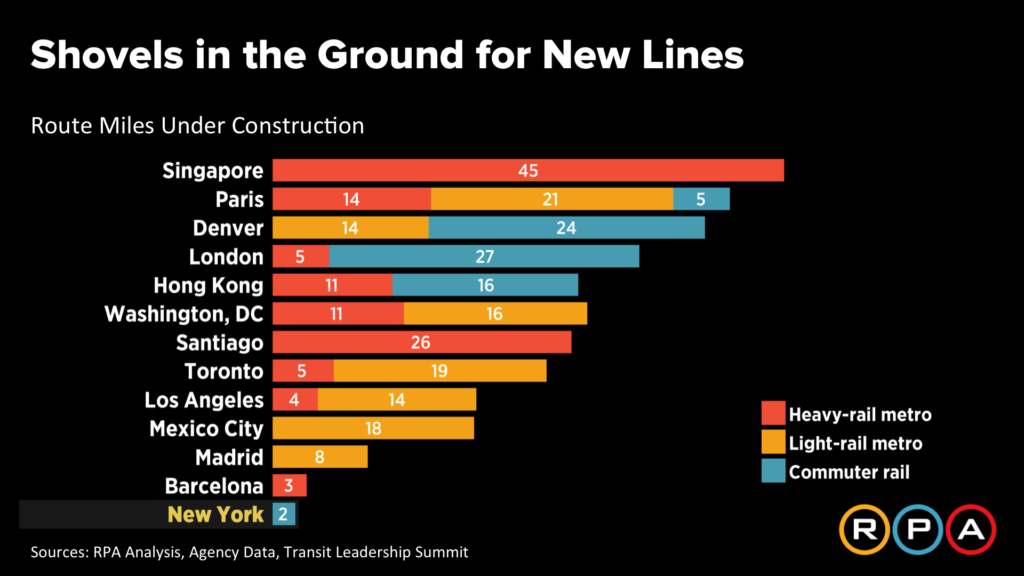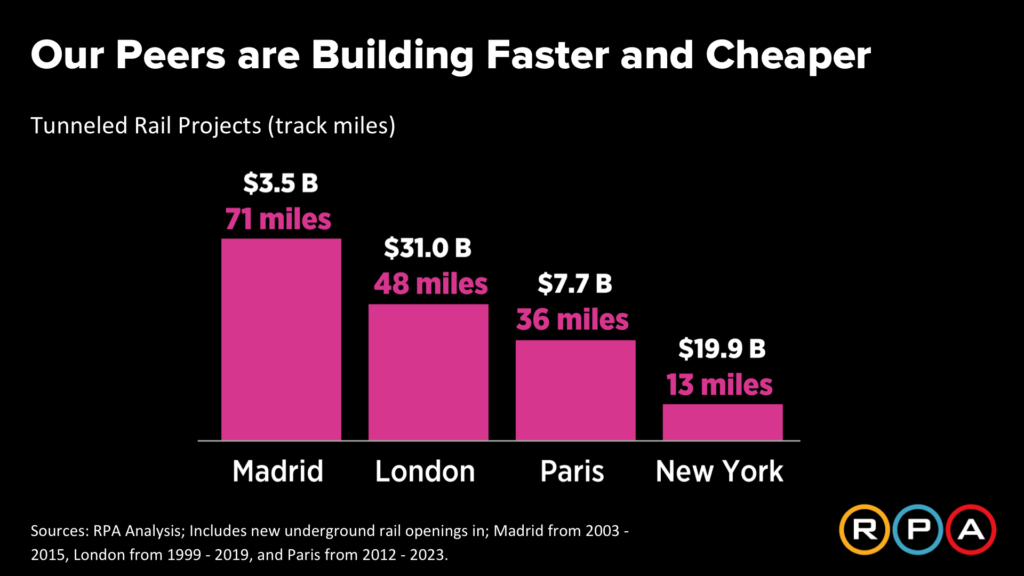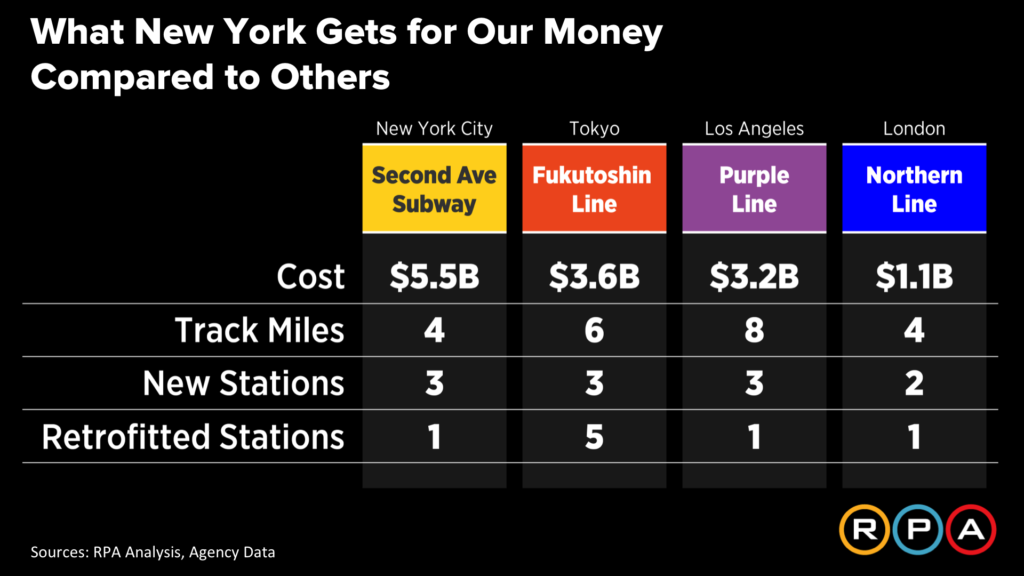New York City is unthinkable without its extraordinary subway. Its density, wealth, architecture, arts and culture, and even its very sense of itself would be greatly diminished without the railroad that links far-flung neighborhoods. The subway has helped mold New Yorkers, and worked as a channel of upward mobility almost from the start.
For about a year and a half my RPA colleagues, Rich Barone and Alyssa Pichardo, and I have been conducting a study of subway construction costs in New York. We’re doing this for many reasons, but one is that we believe in subway construction and expansion, which we know New York is not going to get at these prices.
Nonetheless, this is a grim subject indeed. We all know that New York’s costs are astonishingly high and the time required for construction astonishingly long. We know that the public is skeptical of New York’s ability to deliver major capital projects. We know we’re not going to get more transportation construction, however crucial to the city’s development, unless costs are brought down and procedures streamlined.
Our subway peaked in 1937.
With the exception of a few minor projects, New York has had no substantial increase in its system capacity since the 1930s.
The subway has far fewer miles of track today—and also fewer miles of commuter rail—than at their peaks in 1937, which was the year the Marx Bros filmed A Day at the Races and Fred & Ginger waltzed their way through Shall We Dance
In other words, our subway’s peak was a long time ago.
When we began our study, we intended to focus on New York City and its peers—the other world capitals, our competitors. But we took the data wherever we found it and we followed it—often in some odd directions.
NYC is falling behind.
Here’s a chart of route miles actually constructed from 2006 thru 2016. You see who leads the pack—Denver, of all places, a city that until recently pretty much disdained public transportation.

And granted it’s much easier to build out there than it is here but it’s not easier to build in Paris, Madrid and Barcelona.
Los Angeles, another Post-WWII disdainer of public transportation, comes in well ahead of NYC at 21 miles.
While NY has the nation’s largest subway by far—infrastructure that helped make it rich—New York is no longer the leader in building new track miles.

This chart is telling us the path we have set for our future. Singapore leads. Paris follows, adding to its already superb (and quiet) system, linking not just neighborhoods but its region. New York sits at the bottom with two miles.

The clear winner is Madrid—that dense, medieval city—having built 71 miles for $3.5 billion. New York’s 13 miles cost it $20 billion.
Take no comfort in London’s figure, which looks impressively high—$31 billion spent on 48 miles. But had London been spending-New York-style it would have shelled out another $22-24 billion.

The Second Avenue Subway is the most expensive subway extension on the planet at a cost of $807 million per track mile for construction costs alone versus, say, London’s Northern Line extension to Battersea at roughly $124 million per track mile. SAS’s $5.5 billion bought us four track miles and three new stations while the Northern Line’s $1.1 billion will bring Londoners four miles and two new stations.
Seriously? New Yorkers need answers. We hope to provide a few of them in our report on the high costs and delays of delivering public transit construction, to be released later this year.
At the 2017 RPA Assembly, RPA featured a panel discussion on Building Big for Less moderated by the author featuring Seth Pinsky, Executive Vice President, RXR Realty; Denise Richardson, Executive Director, GCANY; Polly Trottenberg, Commissioner, New York City Department of Transportation; Charles W. Moorman, President & CEO, Amtrak; Thomas Prendergast, Executive Vice President and Chief Strategic Officer, STV; and Riz Shah, Capital Projects & Infrastructure, US Public Sector Leader, PwC. View the full video from this session below.
RPA Assembly 2017 - Building Big for Less from Regional Plan Association on Vimeo.
